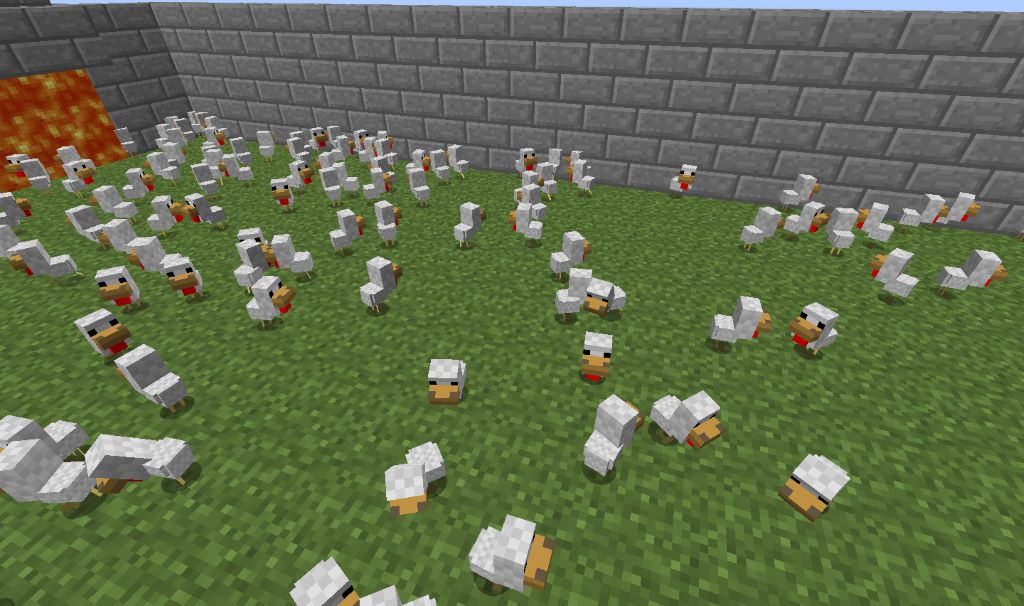
01 Sep How Many Chickens Does It Take to Entity Cram?
Have you ever found yourself pondering over peculiar questions that seem to defy conventional wisdom? Questions like, “How many chickens does it take to entity cram?” might seem whimsical at first glance, but they often lead us down intriguing paths of thought. In this article, we’re going to dive deep into this quirky conundrum, exploring various angles and using analogies to shed light on the unexpected ways in which seemingly unrelated concepts can intersect. This article is managed by Gamegreatwall.com.
Unveiling the Mystery: The Entity Cram
To embark on this journey, we must first grasp the concept of “entity cram.” The term itself may sound abstract, but its essence is rather straightforward. Imagine trying to fit a multitude of entities into a confined space. These entities could be anything – objects, ideas, or even, in our case, chickens. Discover the entity cramming minecraft.
The Chicken Conundrum
Now, let’s turn our attention to the heart of the matter: chickens. Chickens are more than just farm animals; they’re an embodiment of diversity. In the realm of entity cram, chickens offer an excellent vehicle for understanding the balance between quantity and space.
The Interplay of Quantity and Space
To answer the perplexing question, we must consider the dynamics of cramming entities together. Think of it as a puzzle where each entity is a piece, and the available space is the puzzle board. When you start adding more pieces, there comes a point when the puzzle pieces start overlapping or compromising the puzzle’s integrity.
A Delicate Equilibrium
Much like this puzzle analogy, cramming chickens into a confined area requires finding a delicate equilibrium. You can envision it as stacking blocks – the higher you stack, the more unstable the structure becomes. Similarly, the more chickens you cram into a space, the more complex the dynamics between them become.
The Domino Effect of Interactions
The interaction between entities, especially in tight spaces, creates a domino effect of consequences. Chickens, for instance, have distinct behaviors and hierarchies within a flock. When crammed together, their interactions amplify, often resulting in unexpected outcomes.
From Chickens to Complex Systems
This phenomenon isn’t limited to chickens alone. The dynamics we observe when cramming chickens can serve as a metaphor for various complex systems – from social dynamics to data networks. It highlights how interactions intensify under constraints, potentially leading to new emergent behaviors.
The Cognitive Connection
As we explore the intricacies of entity cram, we can draw parallels with cognitive processes. Consider the human mind as a space for thoughts and ideas. When we attempt to process a multitude of concepts simultaneously, we often find ourselves struggling to maintain clarity.
Clutter and Clarity
Just as cramming too many chickens can result in chaos, overloading our minds with excessive information can lead to cognitive clutter. Finding the right balance is crucial to ensure that each piece of information retains its clarity and significance.
Navigating Realms of Possibility
The journey of cramming chickens has taken us through various domains – from physical spaces to abstract concepts. It’s a testament to the interconnectedness of ideas and the unexpected avenues they can open up.
Embracing the Unconventional
So, how many chickens does it take to entity cram? The answer isn’t a fixed number; it’s a reflection of the intricate dance between quantity and space. It’s a reminder that embracing the unconventional can lead to valuable insights and novel perspectives.
FAQs
Q1: Is there an exact number of chickens that represents the point of “entity cram”?
A1: No, the concept of entity cram is more about the dynamics and interactions rather than a specific number.
Q2: Can the idea of entity cram be applied to other contexts?
A2: Absolutely! The principles of entity cram can be metaphorically extended to various scenarios involving constraints and interactions.
Q3: Are there any benefits to studying quirky questions like these?
A3: Yes, pondering over such questions stimulates creative thinking and helps us explore unconventional connections between ideas.
Q4: Can entity cramming be applied to technology or data?
A4: Yes, similar dynamics can be observed in systems where multiple components interact within confined spaces, such as data networks.
Q5: How can the insights from entity cramming be practically utilized?
A5: Understanding entity cramming can enhance problem-solving skills by encouraging consideration of the delicate balance between quantity and space.
In conclusion, the enigmatic question of how many chickens it takes to entity cram isn’t merely a whimsical thought experiment. It serves as a gateway to exploring the dynamics of interactions, the balance between quantity and space, and the interconnectedness of diverse concepts. So, the next time you encounter an odd question, like how to get mega energy in Pokémon Go, don’t be quick to dismiss it. It might just lead you down a rabbit hole of thought that unveils unexpected insights.


Sorry, the comment form is closed at this time.